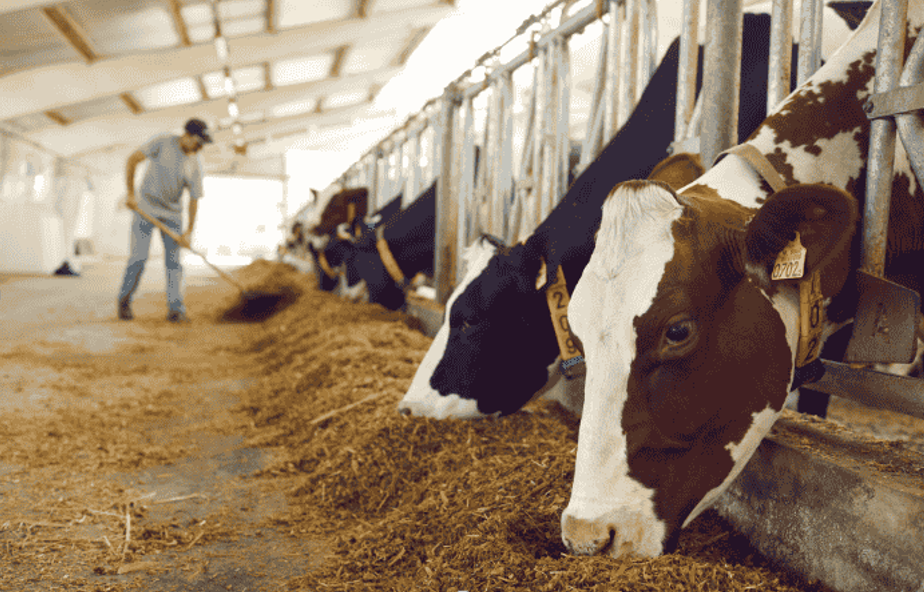Livestock joint stiffness can be problematic for animals and caregivers because it will impact mobility, productivity, and health. No matter what animal you are raising, whether it is cattle and sheep or goats or horses, paying close attention to changes in movement early on is paramount. Knowing how to handle things when stiffness arises can help in long-term health and help your operations continue without interruption.
This post outlines practical, responsible steps to take when you notice signs of joint stiffness in your animals.
Know the Signs Early
The first step to beginning to treat potential joint stiffness is being aware when an animal is not moving as it should in its normal gait. Signs to watch out for are
- Hesitation when walking or turning
- Favoring one limb over another
- Slowing or resisting rising
- Swelling in the joints
- General reduction in activity or interest
These signs can differ for each species, and, in most instances, can come on slowly. Keeping in-depth records of your animals’ behavior, particularly around the time of seasonal transition or after hard work, will make trends easier to see.
Assess Environmental Conditions
Environmental conditions can significantly affect joint function. Before you draw any conclusions regarding supplements or support devices, it is a good idea to assess your animals’ daily conditions. Ask yourself:
- Ground Surface: Slippery or rough ground surfaces can lengthen joints.
- Shelter Quality: Cold or drafty shelters can discourage movement.
- Bedding: Hard or inferior quality bedding can lead to joint discomfort.
- Feeding Habits: Inadequate diets for some nutrients can affect musculoskeletal health in the long run.
Changing shelter, footing, or feeding locations in some cases can help to improve without any further intervention. Adequate intake of water particularly in winter can also be included in general health.
Schedule a Veterinary Assessment
It is always better to have a vet’s opinion when you observe old changes in mobility. An official evaluation can exclude injury, infection, or other causes. The vet may recommend diagnostic tests like physical examination or radiographic assessment based on the animal and the intensity of the signs.
They can even advise on the right exercise, weight control, or environmental changes to your own livestock system. It is also good to inquire if adding a livestock joint supplement would be beneficial as part of your long-term strategy.
Learn the Role of Nutrition
While there is no individual cure that will work, general joint health in the form of well-nourished tissues tends to be a sound long-term option. However, some vitamins, amino acids, and minerals could play a part in healthy connective tissue.
In recent years, livestock collagen supplements have been more and more utilized as a part of normal care routines. Collagen is one of the component proteins of natural connective tissues, and maintaining the correct levels is important for healthy movement.
In considering nutritional supplementation, keep in mind the following:
See also: Why It’s Important to Promote Heart Health as You Get Older
Visit a nutritionist or vet
Identify if a supplement will be compatible with your animal’s diet and workload.
Read the label
Select products developed for livestock, not carryover from pets.
Monitor changes over time
Monitor behavior, mobility, and performance to gauge any long-term benefits.
Encourage Gentle Movement
While rest might appear to be the natural remedy for stiffness, flat-out prevention of movement at certain times can actually cause more issues. Light exercise induced by open areas or controlled walking regimens can restore joint function. It is a matter of not overexerting but keeping the animal moving.
For work animals, temporary reduction of workload or modification of the character of physical demand would be advantageous. For instance, task alternation or shortening the time spent working on hard surfaces can be a relief while still being engaged in daily activities.
Preventative Care Makes a Difference
Prevention of stiffness of the joints before it causes a problem is stronger than treating it subsequently. Prevention measures include:
- Regular health checks to track weight and movement
- Workload reductions appropriate to age to prevent overuse
- Feed regimens consistent with attention to nutritional balance
- Intelligent utilization of shelter and bedding to allow freedom of movement
As the years pass, so can the needs of the animals. Regular checking of your herd management plan—particularly after season change, labor needs, or changes in herd composition—is the secret to remaining on top of things.
Final thoughts
At such times when the cattle begin stiffening in the joints, it is a warning to check their surroundings, diet, and regular care. Nothing can ever assure anything, but preventive care and dietary supplementation can ensure long-term stability.
Most livestock farmers seek smartly engineered supplements as part of their livestock care routine. OptiWize Collagen Plus, for example, is a livestock collagen supplement that aims to enhance joint function and movement in animals. As with all other products, it is advisable to research whether or not it will work with your veterinarian’s recommendation and your livestock’s individual needs.
By staying observant and adaptive, you can support the well-being and performance of your animals at every stage of life.






